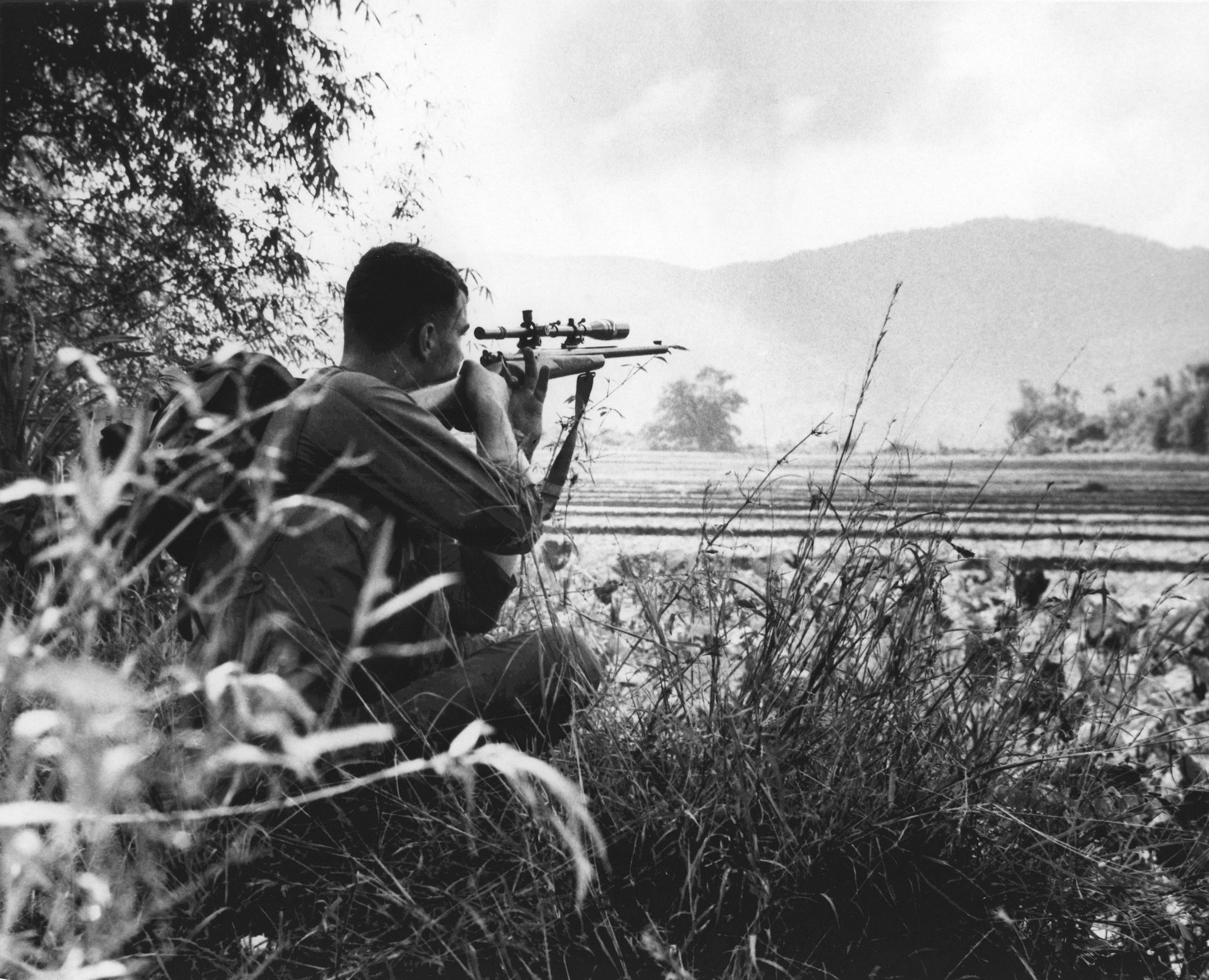Stories of exploits in Vietnam by legendary Marines are commonplace, but few Marines have had as many stories told about them as the sniper Carlos Hathcock. Though he held records for the most number of kills as well as the longest successful shot, he did not see these as important. Gunny Hathcock enjoyed the hunt rather than the killing.
The hunts that Gunny Hathcock undertook are the stuff of legends and movies. Hathcock was an uncannily successful marksman that showed his ability at a very young age. He was deployed to Vietnam in the military police but soon transferred to take up duty as a sniper.
It was quickly apparent that he had found his niche in the Army.
His trade-mark white feather worn in his gear was a taunt to the enemy to come and find him, which they never did. Gunny Hancock died of multiple sclerosis in 1999, but he gave a series of candid interviews about his time as a sniper in Vietnam before he died.
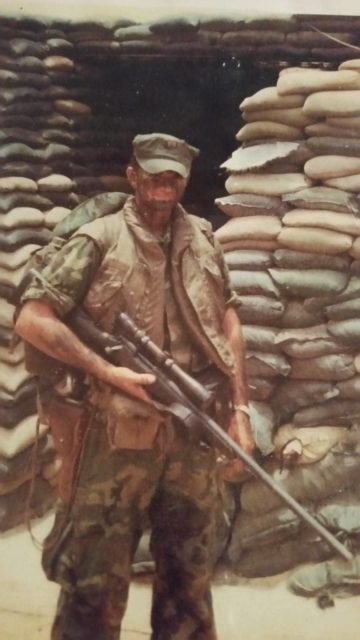
A few against an entire company of the North Vietnamese Army (NVA)
Gunny Hathcock reminisced about the time he and his observer ran into an NVA infantry unit. The NVA were crossing an open rice paddy, and it was apparent that they were very new, with shiny new uniforms. The sniper noted that they had no means of communication.
Working in conjunction with his observer, he shot the officer at the front of the platoon, while his observer shot the rear officer. The snipers then shot four platoon members before the last remaining officer started running back across the paddy to the cover of trees on the side. Gunny Hathcock stopped him from reaching the safety of the trees.
The platoon hunkered down in the paddy with no leadership, so the sniper team decided to stay and fight rather than melt into the surrounding jungle.
For the next five days, the sniper team would harry the platoon during the day and call in artillery support at night. The sniper team would then move under cover of darkness, and the next morning the platoon would attack the position they held on the day before.
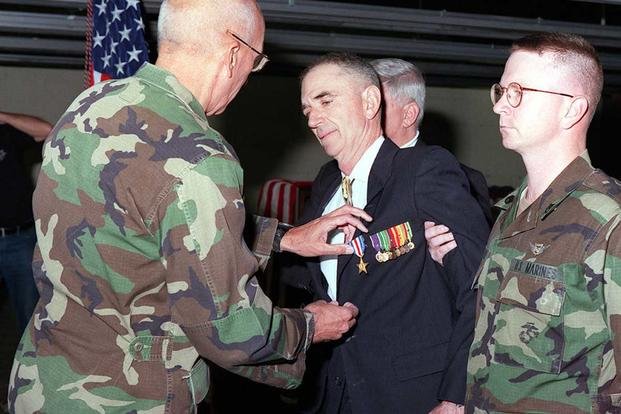
An NVA Sniper – ‘The Cobra’
Once a person assumes legendary status, many takers always want to wrestle the crown from your head, and Gunny Hathcock was no exception. The NVA were well aware of Gunny Hathcock and were determined to remove him from the field, so they sent their counter-sniper, The Cobra, to undertake the task of killing Hathcock.
The Cobra made the mistake of shooting a Marine Corps Gunnery Sergeant outside Hathcock’s quarters on the base. The man died in front of Hathcock, which made it personal for Hathcock to kill The Cobra.
Hathcock had come to the end of his first tour in Vietnam and had accumulated 86 confirmed kills with a mountain of probable kills.
Returning for his next tour, he and his observer took their kit and prepared to trail The Cobra.
https://www.youtube.com/watch?v=p7wnTfbtODI
Hathcock stumbled over a decaying tree, allowing The Cobra to take a shot. The shot missed Hathcock but hit his observer’s water canteen. The Cobra ran off, and Hathcock followed. Eventually, the two teams had switched places. This played into Hathcock’s hands as The Cobra now faced into the sun.
Hathcock remembers how he saw the sun glint off The Cobra’s scope, and he fired at that position. When Hathcock went to check that he had killed his man, he found that his shot had passed cleanly through his opponent’s telescopic sight, without touching the sides.
VC Sniper – Apache
The one story that Hathcock was reluctant to speak of concerned a Viet Cong (VC) sniper named The Apache.
The Apache was a sadistic woman who had served in the war long before Hathcock went to Vietnam. When Hathcock arrived with his platoon, they were told of The Apache and how she liked to torture Marines within earshot of the base to undermine the American soldiers’ morale.
Hathcock recalled how The Apache had skinned one young Marine alive for a day and a half until she let him go. He died in the wire, an act that made Hathcock determined to put an end to this sadistic person.
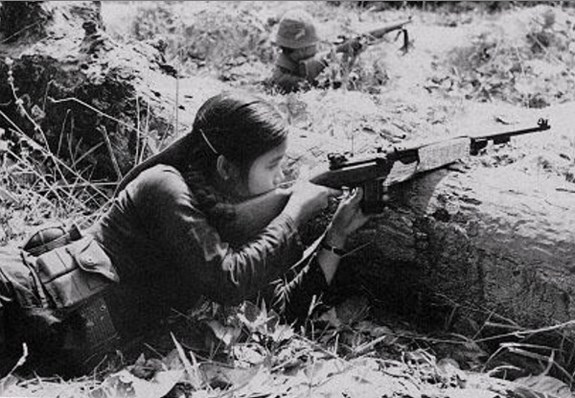
While out on a regular patrol, he came across a group of VC. He recognized one of the group as The Apache.
When she stopped to urinate, much to the troops’ concern with her, Hathcock shot her. Not content with killing her with his first shot, he sent a second down just to make sure that she was dead.
One sniper against an entire NVA base
Gunny Hathcock took his fellow Marines’ safety very seriously and often took on the most dangerous missions himself. One of these dangerous missions was to eliminate a high-ranking NVA officer, but it also meant that he had to infiltrate an NVA base.
Rather than undertaking the two-mile trek through hostile territory on his belly, he instead opted to use a sniper-crawl on his side as this minimized the trail left behind. He had to avoid patrols and slide around two machine-gun nests during his crawl to enter the base.
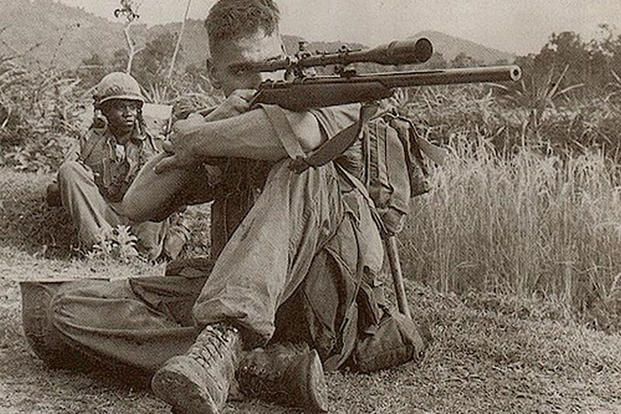
The NVA did not expect a single man to invade the base, and when NVA soldiers strolled past him, he knew that he had entered undetected. Ensuring that his escape route was clear, he set up a firing position around 700 yards from where he expected to see his target.
He took the shot, eliminated the officer, and made his escape, as the soldiers on the base did not run toward him but rather to the surrounding jungle to seek cover.
He did not need a sniper rifle to take a shot.
A story attributed to Gunny Hathcock concerned a VC sniper that was harassing Hathcock’s base. Hathcock was determined to end this sniper’s rule of terror.
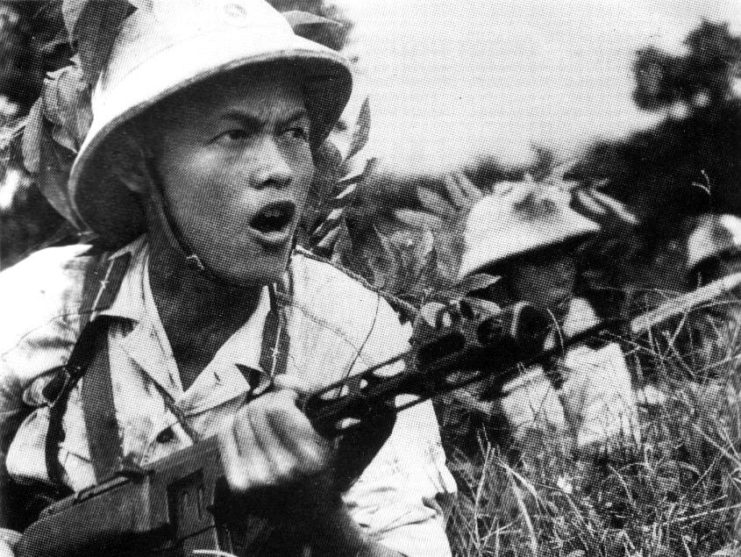
One of the golden rules of sniping is that the sniper should never fire more than three shots from any one position before moving to a new post.
Hathcock noticed that the VC sniper seemed to prefer one specific position and took many shots from it. He did not have his sniper rifle, but that did not stop him from patiently zeroing in on that position using the base’s 105mm M40 Recoilless Rifle.
Another Article From Us: Spy gadgets made for WW2 secret agents up for auction – and they display British ingenuity
When the sniper took his next shot, Hathcock fired back, and the sniping stopped.
